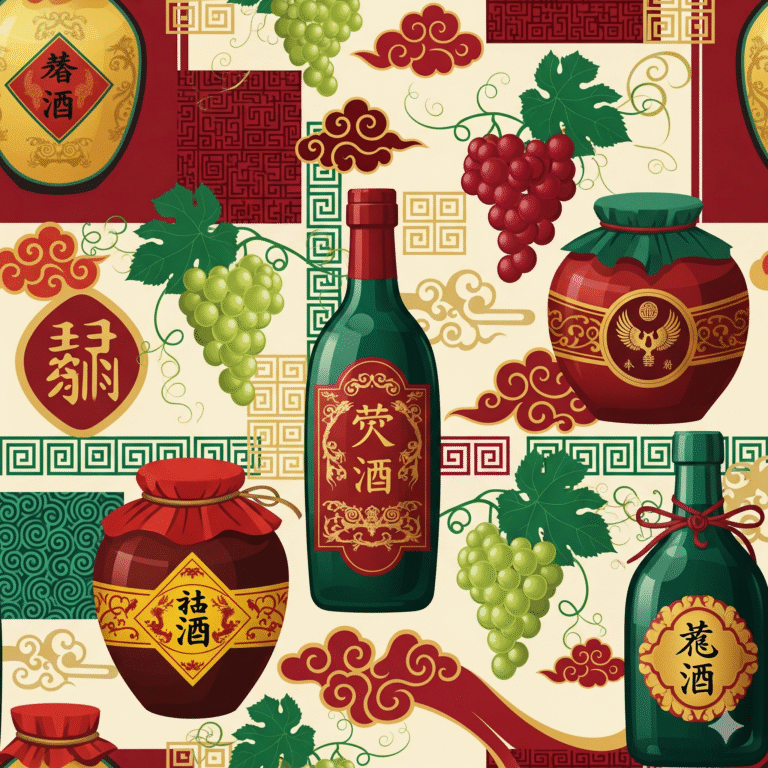
Image Source: AI
In this exclusive interview with AgroSpectrum and NuFFooDS Spectrum, Wine Brand Strategist and Digital Communications Specialist Margot van Lieshout-Koopmans, DipWSET, shares her reflections on the rapid evolution of Chinese wine. She explores how Marselan has become China’s signature grape, adapting across terroirs from Ningxia to Xinjiang and offering a storytelling opportunity through regional diversity. Margot highlights the emerging sensory identity of boutique Chinese wines—ripe yet fresh, textural, and increasingly expressive of place rather than Bordeaux mimicry. She emphasizes the power of visual storytelling and culturally rooted label design in elevating authenticity and overcoming global scepticism. On commercial strategy, she notes rising curiosity in export markets like France and Switzerland, but stresses that sustained growth will hinge on consistency, identity, and immersive wine tourism. Ultimately, she positions Chinese wine not as an imitator, but as a new voice in the global wine chorus—confident, distinctive, and ready for discovery.
Section 1: Sensory Identity & Terroir
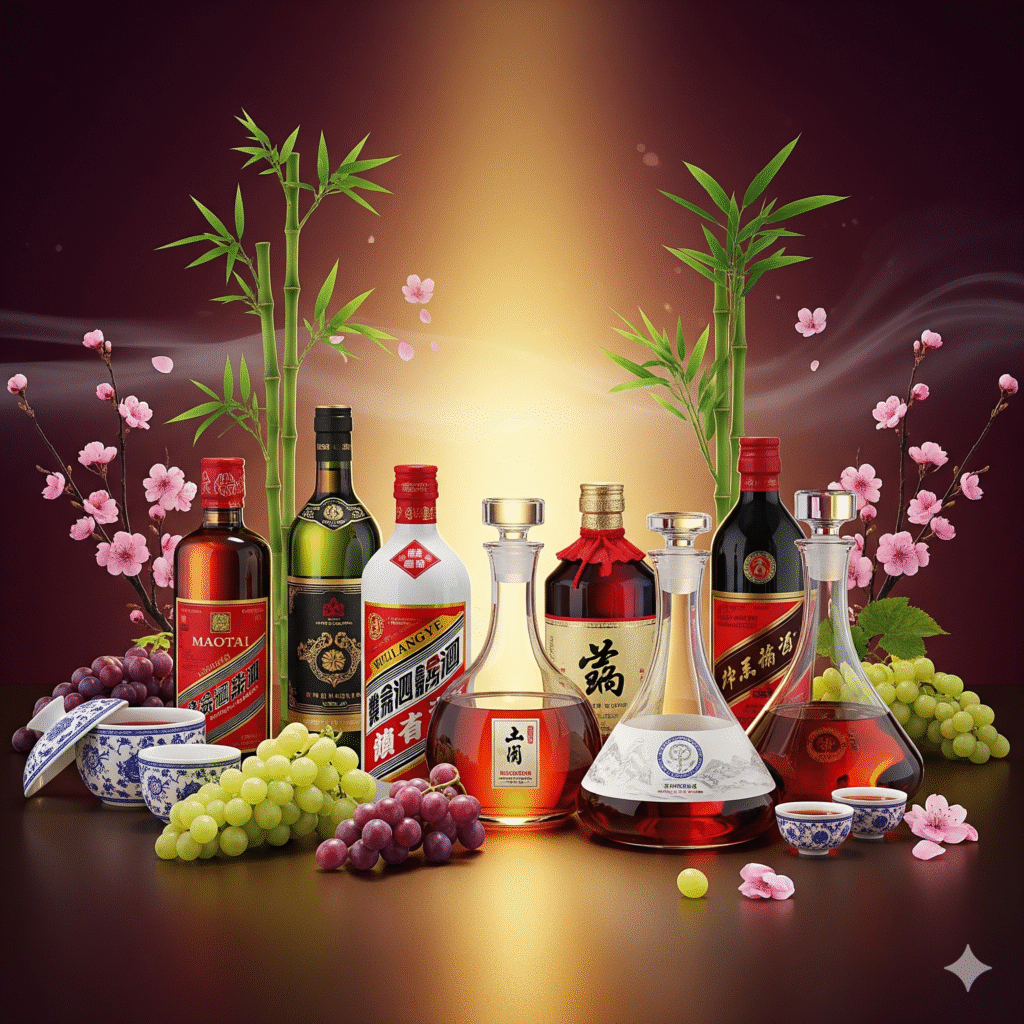
To what extent does Marselan express regional typicity across China’s diverse terroirs—e.g., Ningxia vs Shandong vs Xinjiang—and how can sommeliers communicate these differences effectively on a wine list?
China gave Marselan its own sense of identity. And let me tell you, it’s not just a single identity—it’s a whole passport full of terroir stamps.
When you travel through China’s wine map (and believe me, it’s a journey), Marselan starts to behave like that friend who picks up the accent of wherever they visit. Put it in Ningxia, and it becomes elegant and structured, with a mineral backbone and just the right whisper of age-worthiness. Shift it to Xinjiang, and suddenly it’s laid-back, sun-drenched, and fruit-forward—think plush dark cherries and a velvety texture, like it’s been soaking up the sun on a desert rooftop. Then move over to Shandong, and you’ll get more herbal notes, maybe even a hint of coastal brine—thanks to the humidity and maritime influence. Even Yunnan is joining the chat with its high-altitude finesse and lifted acidity—light, bright, and almost ‘Pinot-esque’ in delicacy.
So, how do sommeliers capture this symphony of styles without turning their wine list into a dissertation? Easy: turn regionality into storytelling.
Instead of listing “Marselan, China,” on the winelist – just be bold and granular. For example, try something like:
“Marselan – Ningxia: Structured, Mineral, Elegant”
“Marselan – Xinjiang: Plush, Ripe, Fruit-Forward”
“Marselan – Shandong: Earthy, Herbaceous, Coastal”
This isn’t just about flavours—it’s about narrative. Sommeliers have an incredible opportunity here: to frame Chinese Marselan not as a one-size-fits-all variety, but as a landscape in a glass. Imagine offering a flight of Marselan’ from three provinces—it’s like a fast-track Masterclass on Chinese terroir for your guests.
One tip? Skip the Bordeaux comparisons. I know it might be tempting, especially given Marselan’s parentage and how influential Bordeaux has been in shaping China’s initial winemaking ambitions.
But the new Chinese generation is here to carve out their own groove. And this grape, more than any other, is allowing that expression to sing. Think of Marselan as China’s acoustic set—stripped back, emotionally honest, and regionally fluent.
In the end, sommeliers who can translate Marselan’s regional dialects into compelling wine list language—and maybe offer a few playful flights—will not only invite adventurous drinkers but also contribute to demystifying Chinese wine altogether.
Because let’s be honest: Marselan might just be China’s answer to Pinot in Burgundy or Syrah in the Northern Rhône. Only this time, it’s not France—it’s Marselan on the New Silk Road. And it tastes like a journey worth taking.
What organoleptic traits consistently define boutique Chinese wines that seek to reflect their origin rather than imitate Bordeaux? Are we beginning to see a Chinese ‘palate signature’ emerge?
Before setting foot in Yinchuan, I genuinely had no clue what a “truly Chinese” wine tasted like—let alone what it might feel like in the glass. I wasn’t chasing Bordeaux comparisons; I simply didn’t know what to expect. But after swirling and sipping my way through a whirlwind of (boutique) producers, I can confidently say: something is taking shape. Something deliberately Chinese.
Let’s talk organoleptic traits—yes, the sensory stuff.
These boutique wines aren’t just technically sound—they’re elegant, textural, and expressive. You get ripe, vivid fruit—think black cherry, plum, even hints of goji berries or dates—but with freshness, not jamminess what you might expect. There’s a velvety mouthfeel, with tannins that are structured but silky, like a firm handshake that doesn’t try to crush your fingers.
Acidity? Present and well-integrated, especially in high-altitude wines from Ningxia and Yunnan. Minerality shows up often, whispering through the finish like a dusting of chalk or wet stone. And oak? Understated. You’ll find subtle spice from seasoned barrels, but no vanilla bombs here. The emphasis is clearly on purity and place, rather than too much of everything.
Now—are we seeing a Chinese palate signature emerge? Yes, if you ask me, but it’s not one-size-fits-all. It’s regionally textured, youth-driven, and intentionally expressive. These wines aren’t trying to be Bordeaux or Barossa. They’re leaning into their own identity, not imitation.
I know I’ve only have tasted the tip of the iceberg, and if this is just the start? Then I’d say the Chinese wine signature is still being written—but the handwriting is already showing.
How do cultural taste preferences—e.g., tolerance for high tannins or low acidity—shape Chinese winemaking styles, and how should international sommeliers adjust expectations when tasting?
If you’ve ever sipped a young Chinese Cabernet with a local winemaker beside you and winced at the tannins, only to watch them nod in serene approval… welcome to China.
There’s a distinct cultural palate at work here—one that still favours structure, power, and presence in red wines. High tannins? Often seen as a marker of seriousness. Low acidity? Preferred in many circles, especially when wine is consumed without food or at banquets where softer textures go down easier. The local market evolved with Bordeaux-style reds for a reason—it matched the idea of luxury, gifting, and “drinking prestige.”
But the tide is turning. Younger Chinese drinkers—especially urban millennials and Gen Z—are asking for more freshness, fun, and fruit. That’s where boutique winemakers are tuning their styles: dialing back extraction, embracing shorter maceration, exploring pet-nats, and even producing Blanc de Noirs from Malbec. Styles are getting softer, brighter, and more playful. Which is a good thing, they are on a discovery journey themselves.
For international sommeliers, this means one thing: reset your tasting lens. If you’re used to the polished acidity of a Barolo or the delicate tannin of a Burgundy Pinot, don’t expect the same here—yet. Understand that Marselan with 14.5 per cent alcohol, velvet tannins, and a soft acidity might be what resonates locally.
So how should you approach Chinese wine?
Keep an open mind.
Drop the Bordeaux comparisons, it’s long gone. Let it speak its own dialect.
Ask about context—Is this meant for gifting? Hotpot pairing? Nightlife?
Celebrate the boldness. These wines often aim to make a statement, not whisper in the corner. And in China they sure know how to put the emphasis on that.
In short, Chinese winemaking is balancing old-world tannic punch with a new-world smile. And sommeliers who learn to navigate both will find themselves ahead of the curve—and sipping something delightfully different.
Section 2: Label Design, Authenticity & Storytelling

How important is visual storytelling in Chinese wine for international markets? Can culturally inspired label designs help overcome the “copycat” stigma and elevate perceived authenticity?
Visual storytelling in Chinese wine? It’s not just important—it’s all or nothing if you ask me. Personally, I love a good wine label that reflects the cultural aspect, without giving me boredom of authentic names and clean labels.
Let’s face it: I think the global wine world still views Chinese bottles with a sceptical eye, especially those that haven’t been proven otherwise. There’s this lingering “copycat” cloud—faux châteaux, Bordeaux-lookalikes, and gold-embossed dragons on labels that scream export cliché. But here’s the twist: the most compelling Chinese wines today aren’t trying to look French—they’re trying to look Chinese. And that shift is winning attention.
I like to believe that I am openminded, but even me, I had to taste quite a few wines, to change my point of view, and it did significantly.
At the Yinchuan Wine Expo, I saw it firsthand. Side by side on the tasting tables were two Marselans: one with a minimalist black-and-gold label in faux Napa chic, and the other with brushstroke calligraphy, soft crimson tones, and a backstory about harvest rituals in Ningxia. Guess which one we couldn’t stop talking about?
Cultural label design isn’t kitsch—it’s credibility if you ask me. It signals that the wine is made not just in China, but of China. International buyers are ready to be intrigued—but they need something authentic to latch onto. Symbolism, regional artwork, poetic names—these don’t alienate; they differentiate.
And it goes beyond the shelf. A wine with a visual story gives sommeliers something to talk about, Instagrammers something to post, and drinkers something to remember. In a crowded global market, that’s the difference between being a curiosity and being collected.
So yes, label design matters. But only when it stops trying to mimic and starts trying to matter.
Because if a picture is worth a thousand words, a great Chinese wine label should whisper: “This is who we are.”
Section 3: Commercial Strategy & Trade Readiness
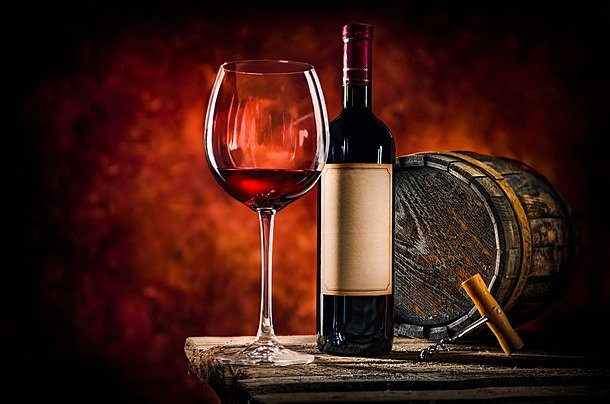
China exported $33.2M in wine in 2024, with France, Switzerland, and the U.S. among its fastest-growing markets. What do you believe is driving this international curiosity—and is it sustainable?
Let’s be honest—when you hear that France is one of China’s fastest-growing wine export markets, your first reaction is probably: “Wait, what?” Just like I did.
But yes, it’s happening. And no, it’s not just a novelty moment. Something deeper is brewing—or should I say, fermenting.
This surge in international curiosity comes down to three things: narrative shift, rising quality, and strategic identity.
First, the story’s changed. China isn’t pitching itself as the next Bordeaux anymore. It’s leaning into Marselan, regional expression, and boutique flair. Wines from Ningxia or Xinjiang aren’t mimicking—they’re making statements. That differentiation is finally resonating, especially with importers hungry for new origin stories and sommeliers building adventurous wine lists.
Second, quality is catching up fast. I’ve tasted Marselans that could hold their own next to top-tier Rhône reds. Yes, quality is still inconsistent—but at the high end, it’s getting really interesting. International competitions like CMB (Concours Mondial de Bruxelles) and Decanter Asia are noticing—and awarding.
And third, China’s wine exporters are getting smart. They’re not just pushing volume—they’re targeting niche, prestige-driven markets like Switzerland, boutique retailers in France, and curious younger buyers in U.S. cities who want to try something no one else is drinking yet.
Now, is it sustainable?
I’d say yes—only if China keeps focusing on distinctiveness over duplication. Export growth won’t come from trying to out-Bordeaux. It’ll come from leaning into terroir, crafting a strong Marselan narrative, and embracing cultural authenticity in packaging and messaging.
The real question isn’t whether the curiosity will fade—it’s whether the industry will keep feeding it with substance.
Because the world is finally asking: “What does China taste like?” And for the first time, there’s a real answer in the glass.
What would be your key considerations before listing a Chinese wine in your restaurant/store portfolio—price-quality ratio, cultural novelty, sustainability credentials, or consumer curiosity?
Ah, the age-old question: do I list this wine because it’s good, because it’s different, or because it tells a story?
When it comes to Chinese wine, the answer is: all of the above—but not in equal measure.
First up, price-quality ratio is essential—but with a caveat. Chinese wines are often priced at a premium (€20–€60 is common in export markets), and that doesn’t always match perceived quality. So, I’m not just looking for “value”—I’m looking for wines that overdeliver relative to their story. If it’s a Marselan from Ningxia with a compelling backstory, solid structure, and for example has a gold medal from CMB? That gets my attention, even at €40.
Next, cultural novelty matters. Let’s be honest: for many consumers, Chinese wine is still a curiosity. But if that curiosity is paired with authenticity—calligraphy on the label, “local” grape identity, a winery narrative rooted in region—it shifts from gimmick to conversation piece. And that’s gold on a wine list or shelf.
Sustainability credentials are a nice bonus—but not a deal-breaker. The narrative is just beginning to form here, and transparency is still evolving. I do look for minimal intervention practices, lighter packaging, or clear water-use strategies in regions like Ningxia, but it’s not yet the tipping point.
And finally, yes—consumer curiosity is real. Especially with younger, globally minded drinkers. If I can offer a Chinese pét-nat at a rooftop wine bar or a Marselan flight in a trendy bistro, I know I’ll spark interest. And repeat orders often follow.
So, what’s the bottom line?
I’ll list a Chinese wine if it tells a story worth sipping, drinks well, and sparks curiosity—because that’s what modern wine drinkers are really buying.
Section 4: Wine Tourism & Experience Economy
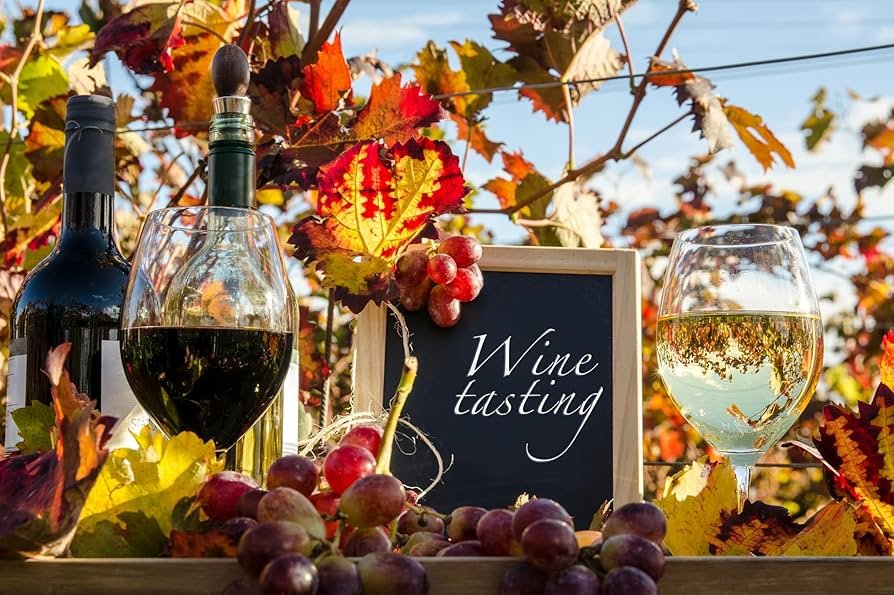
In what ways could the rise of Chinese domestic wine tourism (festival streets, wine-themed architecture, etc.) help shape global perceptions of Chinese wine culture?
Let me tell you—if you think wine tourism in China is all dusty tasting rooms and copycat châteaux, you’re missing the revolution.
Wine tourism in China is evolving into something bold, immersive, and unapologetically Chinese. From the festival street in the old town part of Yinchuan, complete with neon-lit wine slogans and giant wooden goblets, to wine-themed villages and cellar doors carved into desert cliffs, China is turning wine into a cultural spectacle—and it’s working. I have witnessed it myself.
This matters because for global wine perception, experience shapes credibility. The moment you walk through a winery that blends modern design with traditional Chinese motifs, sip a Marselan under the Helan Mountains, or attend a wine and dumpling pairing at a lantern-lit courtyard—it rewires your expectations. Chinese wine stops being “a knockoff” and becomes something rooted, local, and alive.
It’s not just about showcasing terroir. It’s about showing culture: calligraphy on labels, tea ceremony-inspired tastings, architecture that draws from dynastic history. These immersive cues tell the world, “We’re not just making wine—we’re making it ours.”
And tourists—both domestic and international—become brand storytellers. They Instagram the wine walls, they post videos from underground cellars, they write reviews comparing Yinchuan to Mendoza. That ripple effect is priceless.
So, can wine tourism reshape China’s global wine identity? Absolutely. Because nothing says authenticity like being there—and China is curating experiences that are not just visit-worthy, but worldview-shifting.
Wine in China is no longer just something you sip. It’s something you see, feel, and share. And that emotional resonance? That’s what changes perception—and builds markets.
How much does immersive tourism—cellar tastings, on-site storytelling, DTC experiences—influence your opinion of a wine’s provenance and place? Could Yinchuan or Ningxia become Asia’s answer to Mendoza or Douro?
Immersive wine tourism doesn’t just shape my opinion of a wine—it anchors it somehow. Walking through a dusty vineyard in Ningxia, feeling the dry Gobi wind against my face, and then sipping that same vineyard’s Marselan in a cellar built into the rock? Suddenly, that wine isn’t just fruit and oak—it’s context, story, and soil in a glass.
This kind of connection matters. It changes how I assess quality, how I talk about the wine to others, and yes—whether I’d put it on a wine list, if I would be responsible for one. When you’ve been there, you carry the story into every glass you pour.
As for Yinchuan or Ningxia becoming Asia’s Mendoza or Douro? It’s not just possible—it’s already in motion. Like Mendoza, Ningxia offers dramatic landscapes, extreme terroir, and a sense of frontier spirit. Like the Douro, it pairs history with innovation and draws in visitors with a deep sense of place.
But what sets Ningxia apart is its potential to merge traditional Chinese hospitality with contemporary wine culture. We’re talking rooftop tastings under moonlight, calligraphy-inspired labels, and direct-to-consumer platforms that let you buy the wine on your phone before you leave the cellar.
That fusion of heritage and innovation is uniquely Chinese—and incredibly marketable.
So yes, immersive tourism is not a sideshow—it’s the main act. It builds emotional equity, brand loyalty, and cultural trust. And if Ningxia keeps investing in visitor experience with the same ambition it’s shown in the vineyard, don’t be surprised if it becomes the next must-visit wine region on every sommelier’s bucket list.
Section 5: Market Trends & Sommelier Forecasting
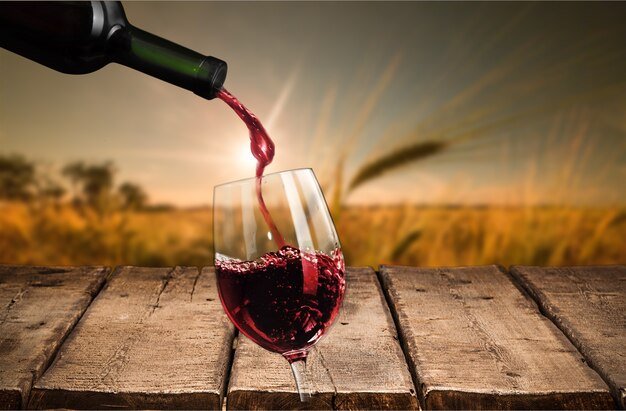
What emerging Chinese wine styles (e.g., Blanc de Noir from Malbec, Pet-Nats, Marselan rosé) show the greatest promise for global sommeliers curating fresh, adventurous lists?
Pfoe! Good question, I think the ‘new wave’ in Chinese wine is having its glow-up on its own — and it’s not just about bold reds anymore.
At the Yinchuan Expo, between the structured Marselans and the Bordeaux look-a-likes, I stumbled on wines that made me pause, raise an eyebrow, and grin. Why? Because they weren’t just good—they were playful. And playfulness is exactly what I believe sommeliers (and winelovers) crave when curating dynamic, trend-forward lists.
Let’s start with the Blanc de Noir from Malbec. Yes, you read that right. It’s juicy, crisp, and totally unexpected. Think white stone fruit meets a gentle red berry kiss. Serve it chilled with summer dumplings or grilled seafood, and you’ve got a conversation starter. These wines take a familiar grape and flip the script.
Then there’s Marselan rosé—arguably China’s freshest flex. With its pale pink hue and surprisingly savory edge, it bridges the gap between Provence chic and local identity. Add some good acidity, and it’s a dream pairing for spicy Sichuan or cold sesame noodles.
But here’s one sommeliers need to watch: a slightly chilled Marselan red. Forget the heavy oak bombs—these are mid-weight, fruit-forward, with smooth tannins and a whisper of spice. Cool it down just a touch, and suddenly it’s a red that works on rooftops, with barbecue skewers or late-night bao. It’s vibrant, chillable, and distinctly modern.
And don’t overlook China’s growing flirtation with German Riesling that they have a growing interest in importing, since it pairs well with their own cuisine. But now they are growing their own Riesling and Riesling Italico—particularly from higher-altitude vineyards. They’re amazingly refreshing, aromatic, and often bone dry, with a crisp green apple snap and a jasmine lift. Mindblowing amazing if you ask me. Fantastic with seafood, or simply on their own with a view.
The common thread? Identity without rigidity. These wines are confident, culinary, and built for curiosity.
If you’re building a list for Gen Z sippers, globe-trotting foodies, or just tired palates looking for what’s next—Chinese wines like these are your secret weapon.
Trust me: your guests will thank you for that bottle of Marselan rosé once it hits their glass. And you’ll be the one who saw China coming—before it went global.
How do you interpret the rise of Marselan as a ‘signature variety’? Could Marselan-based wines become a calling card for Chinese terroir similar to how Carmenère defines Chile or Malbec defines Argentina?
Let me put it this way: if Malbec is Argentina’s party trick and Carmenère is Chile’s comeback kid, Marselan is China’s quiet power move.
Originally a French crossing of Cabernet Sauvignon and Grenache, Marselan has gone from afterthought to headliner—especially in China, where it’s thriving across terroirs like Ningxia, Xinjiang, Yunnan, and even coastal Shandong. And no, it’s not just surviving—it’s adapting, performing, and even winning medals.
What makes Marselan such a strong candidate for “signature variety” status? Simple: it’s expressive, consistent, and distinctively local. In Ningxia, it’s all minerality and structure. In Xinjiang, it bursts with ripe, round fruit. In Yunnan, you get brightness and lifted aromatics. That regional versatility means Marselan doesn’t just tolerate China’s diverse terroirs—it sings in them.
But here’s what seals it: Marselan isn’t trying to be anything. It’s becoming a wine that feels genuinely Chinese—deep in colour, smooth in tannins, high in perfume, and ready to evolve. It aligns with the local palate (silky, bold, approachable) but also intrigues international drinkers looking for something new.
And just like Malbec helped Argentina step into its own, Marselan gives China a clear identity on the global stage. The CMB even has a Marselan-specific category now—how’s that for confidence?
For importers, it’s a no-brainer gateway grape. For sommeliers, it’s a narrative-rich bottle that makes people lean in. And for Chinese winemakers? It’s a blank canvas they’re just beginning to paint.
So yes—Marselan is more than a trend. It’s a flag in the ground. If China is defining its own vinous identity, Marselan is the signature at the bottom of the page.
Do you foresee a space for low-alcohol, female-oriented, health-positioned Chinese wine products in Western urban markets, particularly for Gen Z and Millennial drinkers?
Absolutely. And not just a space—an opportunity waiting to be uncorked.
In the West, we’re watching a generational pivot in real time: Gen Z and Millennials are drinking less wine, when they drink wine, they are simply choosing better, and prioritizing wellness without sacrificing pleasure. They want low-alcohol options that still feel stylish, social, and sensorial. Cue China’s emerging “Fit Girl Routine” wines—yes, that’s seems to be a thing—and then you’ve got a match made in market heaven.
What’s brilliant is how these products are being tailored for modern lifestyles: Lower ABV, sometimes subtly sweet, often attractively packaged, and framed as part of a holistic, feel-good ritual. Think rosé spritz in a slim can, or a tea-infused light red designed for chilling. They’re positioned not just as beverages, but as lifestyle companions—and that’s exactly how Gen Z wants to drink.
Even better? These wines bring cultural intrigue. A light Chinese rosé with osmanthus notes or a gently sparkling rice-blend hybrid (yes, some are experimenting) offers Western drinkers’ novelty plus narrative. It’s different but not intimidating.
And let’s not ignore the “she-economy”. In urban centres from LA to London, women are driving health-conscious consumption trends—and they’re looking for products that align with both their values and aesthetics. Beautiful design, clear messaging, and a “drink without guilt” vibe? That’s winning territory.
Of course, it’ll take smart branding and the right distribution partners. But the appetite is there—and growing.
So yes, Western markets are ready. The question is whether Chinese producers will own this niche or let others capitalize on the concept first. Because trust me, wellness wine with a Chinese twist could be the next cult category.
And I, for one, am here for it.
Section 6: Cultural Resonance & Wine Diplomacy
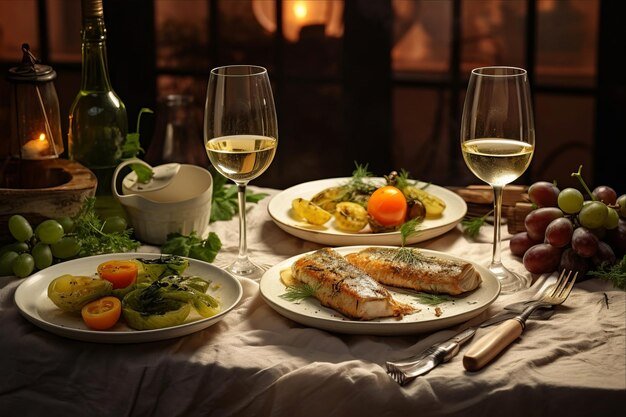
Would you consider Chinese wine a future competitor, collaborator, or curiosity in your current market strategy? What would it take to shift that perspective?
Right now? Chinese wine still sits in the curiosity box for most international markets. But give it five years—and a few smart moves—and it could very well become a collaborator… and eventually, a competitor.
Let’s unpack that.
As a wine brand strategist, I don’t see Chinese wine as a threat to Burgundy or Rioja. Yet. But I absolutely see it as an emerging partner in the global wine conversation—especially when it leans into what makes it different, not what makes it “almost Bordeaux.”
The wines I tasted in Ningxia weren’t trying to out-French the French. They were expressive, terroir-driven, and emotionally resonant. That’s a foundation for collaboration—through wine tourism, joint ventures, or even cross-border wine flights on curated lists. Imagine a Marselan from Ningxia alongside a Carmenère from Chile. That’s not competition—that’s contextual storytelling.
Now, what would it take to move from curiosity to mainstay?
I say these three things:
Consistency in quality. Right now, it’s a mixed bag. To win global trust, Chinese wine needs to tighten up its technical execution—especially at higher price points. So, quality can be seen as face value with its price, now there is no way in identifying quality based on price, you truly must know your Chinese wines to be able to navigate the offering.
Brand clarity. Too many labels still feel lost between two worlds. Own the origin story. To me, ditch faux château aesthetics. Be Chinese—and proud.
On-the-ground education. Importers, sommeliers, even curious consumers need access to context. Tastings, pop-ups, immersive content—it all helps shift perception from novelty to necessity.
So yes ! I see Chinese wine moving from curiosity to collaborator. And if the stars align—better storytelling, better distribution, and better consistency—it might just become your favourite new rival on the shelf.
In a market increasingly shaped by identity rather than imitation, what lessons should global winemakers take from China’s shift from Bordeaux mimicry to self-expression?
If there’s one thing China’s wine industry is teaching the world right now, it’s this: imitation might open doors, but identity builds homes.
For years, Chinese wineries tried to win prestige by copying Bordeaux—châteaux-style estates, Cabernet-led blends, heavy bottles, and gold-foil everything. It got them attention, but not necessarily the affection. Because imitation, while flattering, rarely builds loyalty.
Now? We’re watching a pivot—and it’s electric. Wineries are leaning into Marselan as a local hero, crafting labels with traditional calligraphy and lunar symbolism, dragons, temples and creating wines that taste like where they come from. It’s not just a branding shift—it’s a mindset reset.
So, what can global winemakers learn from this evolution?
Stop chasing prestige. Start chasing personality.
The modern consumer doesn’t care where your grapes rank in Parker points—they care what your wine means. Is it personal? Is it place-specific? Is it different?
Trust your terroir—even if no one’s heard of it yet.
China believed in Ningxia before anyone else did. That belief created an identity, which is now becoming a brand. You don’t need a legacy—you need conviction.
Design with culture, not convention.
A sleek label in Helvetica doesn’t say “authentic”—it says “template.” Chinese winemakers who embraced cultural cues—symbols, stories, heritage—built more memorable bottles. That works everywhere.
In short, the world doesn’t need more regional wannabes. It needs wines that reflect their roots, their people, their point of view.
China’s lesson? Be more yourself. Because the boldest move in wine today isn’t making what sells—it’s making what matters.
Final Open-Ended Thought
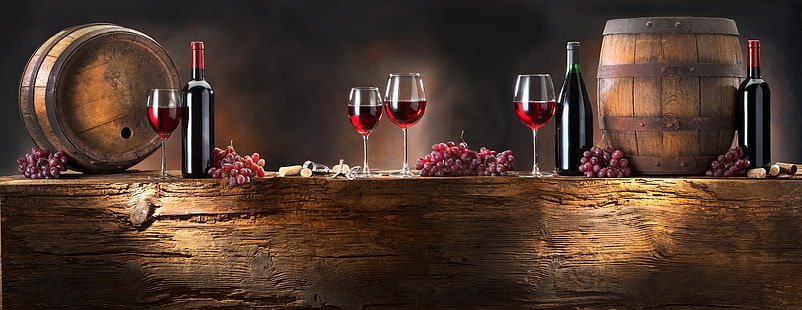
What would be your ideal introduction to Chinese wine? A flight of Marselans from different provinces? A blind tasting of Bordeaux vs Ningxia reds? Or a deep-dive into boutique producers with cultural design narratives?
Honestly? I want all three—with a side of dumplings and a good story and I am hooked!
But if I had to choose one introduction that captures the soul of Chinese wine today, I’d go with a deep dive into boutique producers with cultural design narratives. Why? Because that’s where the real heartbeat is.
A Marselan flight is fantastic for terroir nerds (guilty), and a Bordeaux vs. Ningxia blind tasting is great for busting preconceptions. But it’s the boutique stories—the ones where the winemaker’s grandmother inspired the label, or where the wine is named after a Taoist poem—that linger with you long after the last sip.
These wines don’t just say, “Made in China.” They say, “This is what it means to be a winemaker in Ningxia, or Yunnan, or Hebei, right now.” They’re small-scale, soulful, and bursting with identity. And when you pair that with thoughtful design—calligraphy, folklore, symbolism—you’re not just drinking wine. You’re experiencing culture.
It’s the perfect intro because it breaks every outdated stereotype. It’s not Bordeaux with chopsticks. It’s a new voice in the global wine chorus—clear, confident, and creatively composed.
So yes, give me the Marselan. Give me the terroir contrasts. But start me with a walk through China’s boutique wine scene—labels that make you curious, winemakers who speak from the heart, and bottles that proudly wear their origin on their sleeve.
Because that, to me, is the real China: not imitating the world—but inviting it in.
—– Suchetana Choudhury (suchetana.choudhuri@agrospectrumindia.com )

